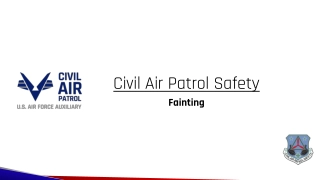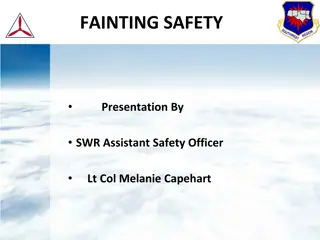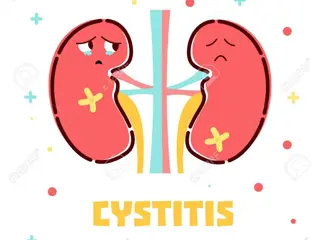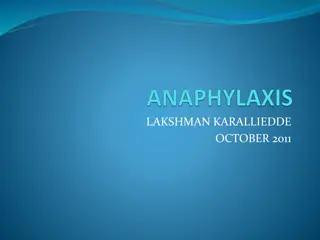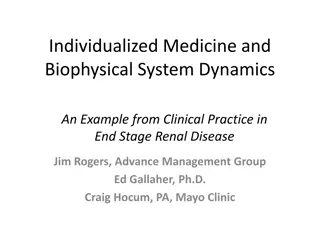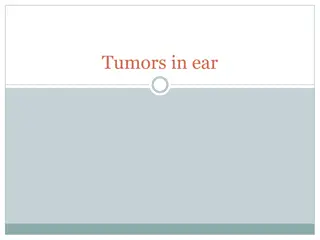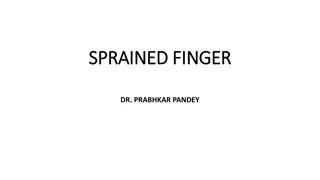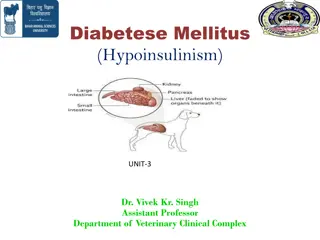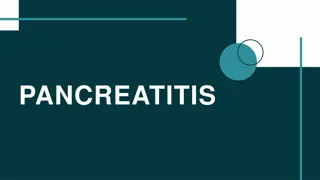Understanding Fainting: Causes, Symptoms, and Treatment
Fainting, a sudden loss of consciousness, can be caused by various factors such as hyperventilation, heart disease, medications, alcohol use, and more. Recognizing symptoms like lightheadedness, weakness, and blurred vision is crucial. Learn how to assist someone who feels faint and what to do if they lose consciousness, emphasizing safety and basic first aid practices.
Download Presentation

Please find below an Image/Link to download the presentation.
The content on the website is provided AS IS for your information and personal use only. It may not be sold, licensed, or shared on other websites without obtaining consent from the author. Download presentation by click this link. If you encounter any issues during the download, it is possible that the publisher has removed the file from their server.
E N D
Presentation Transcript
Civil Air Patrol Safety Fainting
OVERVIEW To provide an update on the causes and symptoms of fainting, and care of a person who has fainted. Fainting is not normal and must be considered a medical emergency until the cause is discovered. 2
FAINTING Fainting - A sudden and temporary loss of consciousness usually due to a loss of oxygen to the brain 3
Causes of Fainting Excessively rapid and deep breathing (hyperventilation) Heart disease (i.e., abnormal heart beats/rhythms) Medications (i.e., antidepressants, blood pressure meds, illicit drugs) Alcohol use Seizures Straining with a bowel movement Low blood pressure or low blood sugar Severe dehydration (i.e., during exercise, heat exposure) Standing too long in one position (i.e., standing in formation) especially in warm/hot conditions 4
Symptoms of Fainting Lightheadedness Dizziness/room spinning (vertigo) Pale skin coloring Fading vision (tunnel vision) or blurred vision Feeling weak, sweaty, or nauseous Falling over 5
Treatment for a person who feels Faint If a person says I feel like I will faint Assist the person to a sitting position, head placed between the knees OR Assist the person to a lying-down position with feet elevated 10 12 inches Stay with the person, and monitor breathing and wakefulness Allow the person to get up when fainting symptoms pass Assist the person as they stand up and ensure they are steady and balanced 6
Treatment for a person who has lost consciousness Before you approach the person, survey the area to determine if it is safe to approach Check for breathing If the person is not breathing: o Give rescue breaths and check for a pulse o If no pulse, start CPR If the person is breathing, loosen the clothing around the neck, elevate the feet 10 12 inches, and monitor for breathing and wakefulness. Stay with the person until they recover - if the person has fainted, recovery usually takes 1 2 minutes Have the person remain lying down for 10 15 minutes. After that, if recovery is complete, provide assistance as the person stands up. 7
When should you obtain medical assistance If the person who has fainted: Does not regain consciousness in 1 2 minutes Sustained an injury while falling, especially to the tongue or head Is pregnant Has chest pain or discomfort, chest pressure, or a history of cardiac disease Has repeated fainting spells Is diabetic Shows signs of a stroke 8


